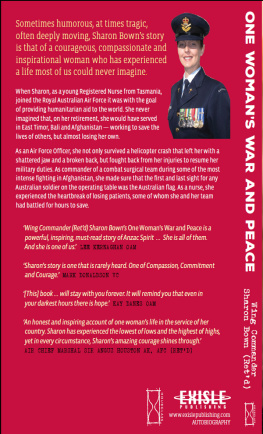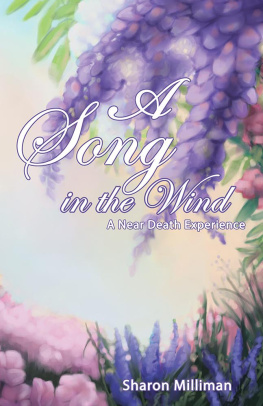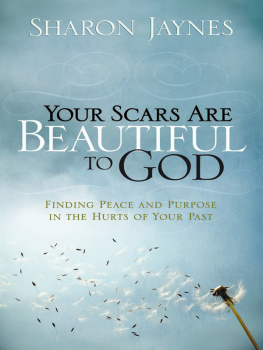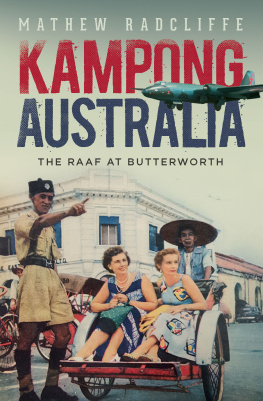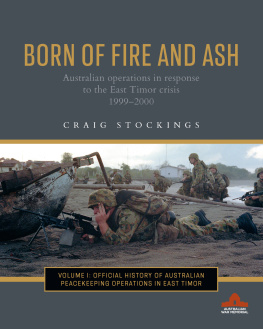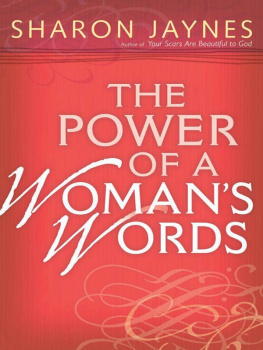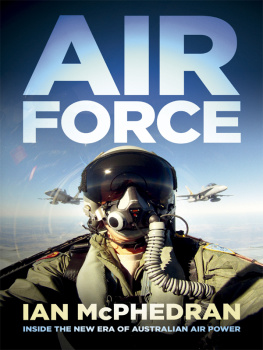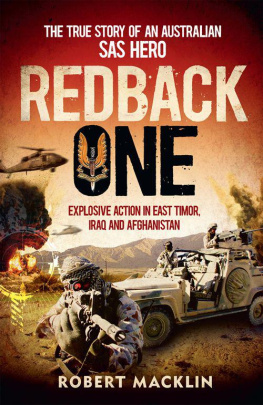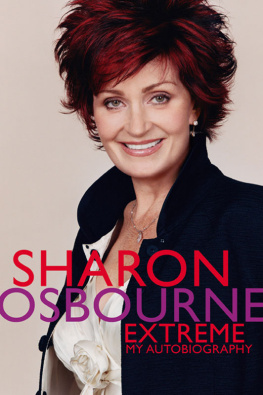ONE
WOMANS
WAR
AND PEACE
A NURSES
JOURNEY IN THE
ROYAL AUSTRALIAN
AIR FORCE
Wing Commander
Sharon Bown (Retd)

For my husband Conway, and our precious boys,
Tiberius and Austin
For the men, women and families dedicated to the
service of Australia.
CONTENTS
FOREWORD
I have worn their blood. So many of us have worn their blood.
Two sentences with immense power and resonance. They were quietly spoken in pre-dawn darkness to thousands of Australians assembled at the Australian War Memorial for Anzac Day 2014. With quiet, awkward humility and abiding reverence they were the words of Sharon Bown. Behind her, onto the front of the Memorial were being projected the images of the men killed in Afghanistan whose blood she had worn.
None of us present will ever forget the power of the moment.
Proudly wearing her Royal Australian Air Force uniform for the last time, more than anyone else she conveyed in that one speech all that military service represents. She conveyed the courage and price paid by those who wear the uniform of our three services in the protection of our nation and its values. She also laid bare her own humanity and that of those whom she treated leading a critical care team in Afghanistan.
Courage comes in many forms physical, moral and emotional. One Womans War and Peace manifests all three. This is Sharon Bowns remarkable story.
Pulled from the wreck of a UN Bell helicopter in East Timor, soaked in aviation fuel with crushed vertebrae and a broken jaw, this RAAF nurse was determined to return to work as soon as she could. Carrying both the physical and psychological pain of this near-death experience, twice in 2004, she returned to work as soon as she could. She helped choose the medical team to assist in Nias after the 2005 tsunami. Then she endured the agony of learning some of those closest to her whom she had selected had been killed in the Sea King helicopter tragedy. She would deploy to Bali after the second bombing in 2005 to provide expert nursing care. She lost and found love, suffered the death of her mother and then, whilst working as my Aide-de-Camp when Defence Minister, her police officer father was shot on duty.
Sharon Bown was determined that these major life events despite her post-traumatic stress would make her stronger. And they did. She writes that being broken gave her the opportunity for growth and to be more complete than she had been. In then exploring the extent of her capabilities, she is testament to the truism that it is not what happens in life that determines its value, but how you deal with it.
The operating theatre in which Sharon worked in Afghanistan and her description of it says much about the Australian character. The Australian Special Forces had presented her team with an Australian flag. She hung it on the wall inside the operating theatre. It would be the last thing these men would see when they went under and the first thing they would see when they awoke.
The most poignant description of her remarkable work there, however, is that of an eight-year-old Afghan boy shot in his home by a stray bullet, curled up as he slept. Describing it as her darkest hour, she writes:
We lost a child. A child who cried for someone or something in his mother tongue as we put him to sleep for surgery. A child who cried to a room full of strangers who could not understand his pleas.
It has taken a great deal of courage to live the life she has in the uniform of the Royal Australian Air Force. But perhaps it has taken more courage for Sharon Bown to tell it.
In doing so, she has told the stories of all those remarkable men and women who serve, each in their own way for us. She gives us a unique insight into the cost of that service and the price paid not only by those in the uniform, but those who love and support them.
There are many books on leadership and an entire industry of people purporting to teach it.
Leadership cant be taught, but it can be learned. It can be absorbed through reflection on the lives and leadership experiences of others. Some lead from position, others from principle. Sharon Bown has done both.
Character derives from the Greek word meaning the impression left in wax by a stone, seal ring. It is informed by values worthwhile intrinsic virtues. Above rank, influence, wealth and everything else stands character.
One Womans War and Peace is a story about character and leadership. One woman and the lives she has touched are an inspirational testament to power of character. Wing Commander Sharon Bown (Retd) has done the Royal Australian Air Force and the nation it serves proud.
Hon Dr Brendan Nelson AO
Director, Australian War Memorial
PREFACE
The following story is an account of events drawn from the memory of a single person: mine. Memories of experiences and life events are as specific as they are personal to those involved. Events evoke different reactions, different emotions and hence completely different viewpoints and memories for each individual. The following story is my story. It is my account of my life experience. I acknowledge that I did not live through these events alone, but I hold dear the way in which I survived them as an individual, and the way in which my life has altered as a result.
With great pride, I concede that my story defines me and my family as collateral damage of the proud and honourable mission of the Australian Defence Force: to defend Australia and its national interests. I am not bitter, nor do I regret the sacrifices I have made in the service of my country. I understood the risks involved at every stage of my service career and I have been free to choose to proceed or withdraw at any time. I am accountable for my choices and I believe it is this personal acknowledgement, made during the course of my recovery, that has enabled me to prevail as a survivor of my service and not a victim. I acknowledge that not all survivors are free to make such choices, nor are they always supported to do so. In the service of Australia, the unintended casualties that result do not only occur in the Australian Defence Force, but also within Australias emergency services, including police, fire, ambulance and the state emergency service.
I hope that in sharing my story there may be a greater acknowledgement and acceptance of these casualties, which result from the continued protection of our unique and precious way of life. While we must always continue to commemorate and honour those who have died in the service of Australia, we must never forget those who have willingly paid the penultimate sacrifice. Indebted to their sacrifice, may we, at the very least, do them no further harm.
I would like to express my thanks to a number of people.
To my husband Conway for his continued encouragement for me to document my story and for his invaluable suggestions, editing and graphic design. Without his insistence that my story should be told, this publication would have only ever existed on my bucket list. I reserve the right to continue to shake my head at his constant cajoling.
To my parents and grandparents, who have always believed that I would make the right decisions in life and who have ultimately provided me with the greatest example of living life in the service of others.
To Doug and Cate Rawlinson, better friends you would rarely find. Through my trials and tribulations, they have always been there.
To my good friend Wing Commander Lara Gunn. I thank her for her friendship, counsel and comradeship. Her presence throughout my Air Force career, from our first, faltering steps at Officer Training School until now as I embark upon my civilian life, has been of great comfort.
Next page
